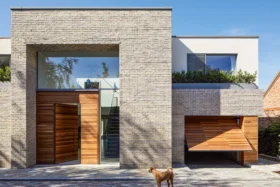
9th & 10th September, Westpoint Arena, Exeter. 100s of suppliers, seminars, expert advice. Explore all the options, all in one place – only at Build It Live.
Book your free tickets now
9th & 10th September, Westpoint Arena, Exeter. 100s of suppliers, seminars, expert advice. Explore all the options, all in one place – only at Build It Live.
Book your free tickets nowPrefab homes are popular among self builders for being a quick and cost-effective solution to a new home. But what do you imagine when thinking of prefabricated homes? If it’s the boxy post-war builds, then you’ll be glad to hear that times have changed.
Contemporary modular construction is a far cry from that low-quality mid-century housing, and while prefab homes share the same quick onsite build speed, that’s one of the few similarities.
“There are many benefits to a prefabricated home, but convenience, value for money and energy saving come at the top,” says Dan-Wood’s Lucy Yendell. “Contrary to what many people believe, modular homes have equally high standards of construction and longevity as brick-built houses, if not more.”
Prefabricated home construction is one of the main housebuilding routes used in Europe – especially in Germany and Scandinavia – as well as in America, Australia, Canada and Japan. While it’s not yet as popular here in the UK, self builders have been flying the flag for prefab homes for the past 15 years or so.
Some of the bigger developers are now appreciating the lure of the precision and timeframes on offer, too. In fact, such are the benefits, many local housing authorities have begun to realise that modular techniques could be part of the solution to the nation’s housing crisis.
As the name suggests, prefab homes are properties that have been created offsite, usually in a factory. You still get all the benefits of design customisation you’d expect with self build, but a lot more of the construction has happened under quality-controlled factory conditions. This could be anything from insulated walling panels with pre-applied cladding, through to full rooms craned into place.
Prefab house building schedules are firm and simple. So, you’ll have a fixed programme for the manufacture, delivery, erection and fit-out of your home (if you opt for that sort of package). Another benefit of prefabricated homes is in the high specification achieved, and the main construction systems used have energy-efficiency at their core.
Learn More: Design & Build: Package Homes Explained
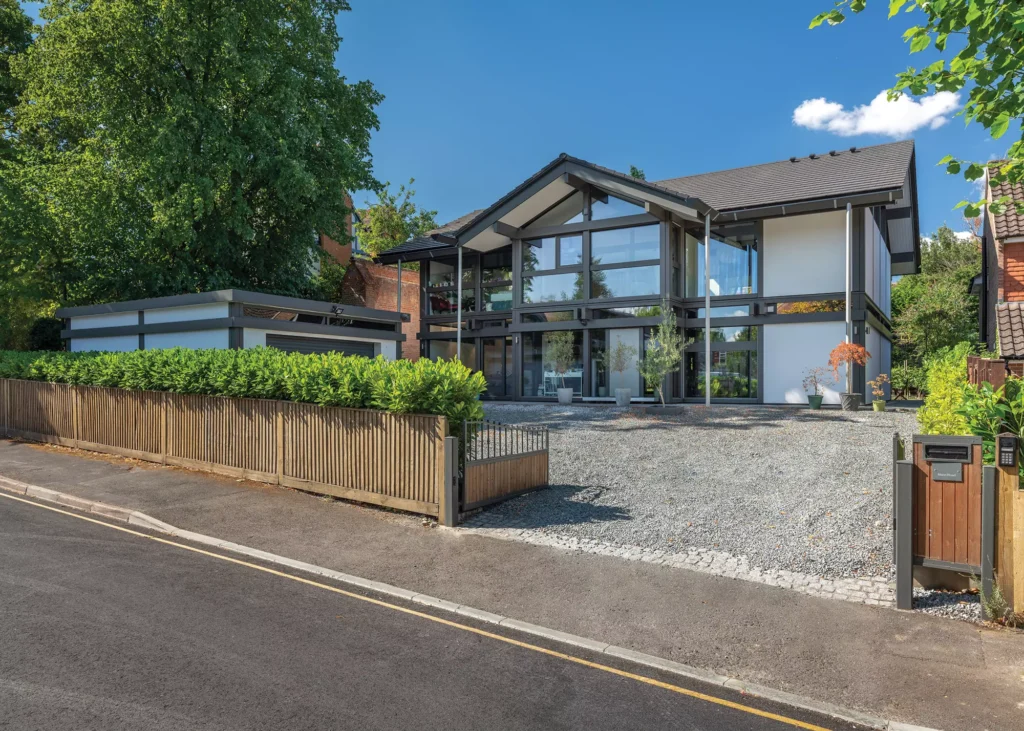
Huf Haus prefab homes offer a factory-produced modern take on post and beam construction. This stunning two-storey new housein Guildford was built on a tight urban plot and benefits from high levels of insulation and thermal efficiency
The most common system for self build prefab home projects is closed panel timber frame, and sometimes structural insulated panels (SIPs). Most self builders engage a specialist company, who will produce the wall and roof elements in their factory. This will come complete with pre-cut door and window openings, and then much of the internal fit-out work will be carried out onsite.
Some suppliers can offer extra prefabrication, with elements such as services running through channels and plasterboard pre-applied internally. “There is an almost infinite amount of options, choices and upgrades available. For example, we offer a wide variety of roof designs, external walls, internal features, sun rooms, eco-packs and other specifications to make each home bespoke to the buyer,” says Nick Fulford of N-House.
Huf Haus is an undeniably iconic name in the industry, and is often quoted as being a prefabricated home system. However, it is worth noting that it has a very different offering to many of the modular companies we are discussing here. The build system is an alternative to panellised options – offering a modern take on a post and beam structure.
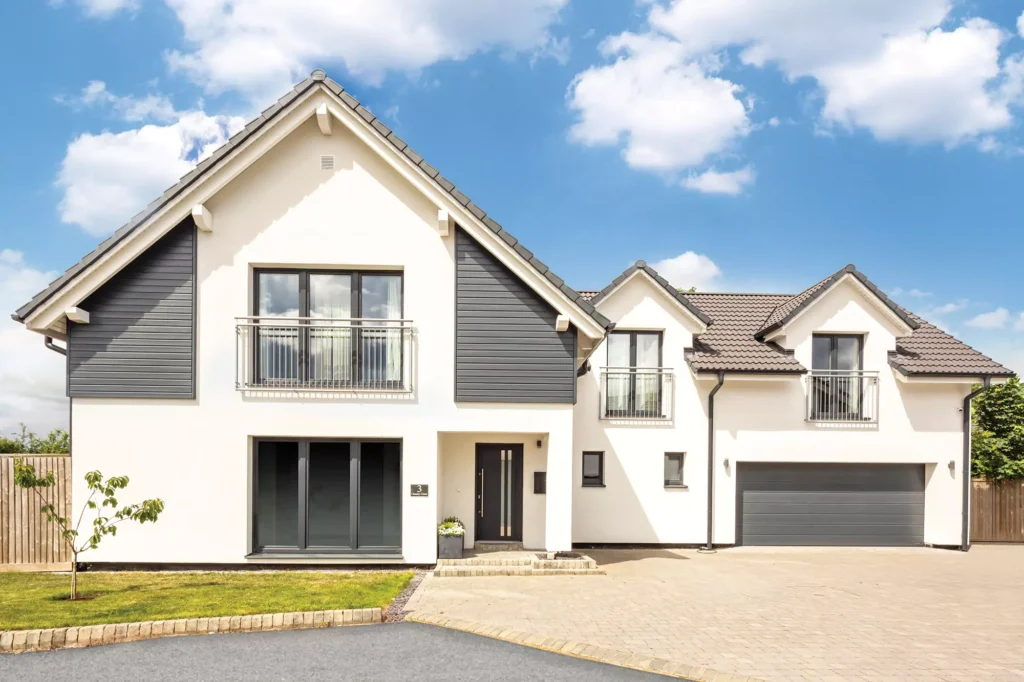
This dwelling in Nantwich is based on Dan-Wood’s Point 239E. All the company’s house styles can be modified at the planning stage to suit individual requirements. Room layouts can be switched, and room sizes altered or extended. Thier prefab homes also come with optional extras such as balconies, mezzanines, garages, pillars or overhangs
“When talking about Huf houses, we mean tailor-made post and beam homes that are individually planned by our experienced architects,” says Ann-Kathrin Hörter of Huf Haus. “Our houses incorporate the benefits of prefabrication; the factory construction under ideal controlled conditions ensures the highest standards of quality and assures that the on-site assembly runs smoothly and quickly. It therefore features a very fast build time. We produce around 100 individually designed projects per year.”
Looking for reliable architects and designers for your self build project? Browse Build It’s Company Directory and find your perfect fit
CLOSER LOOK Prefab Home ExtensionsIf you are looking to add extra living space, brick and block isn’t the only option – prefabricated extensions are becoming more commonplace. As with new homes, prefab additions will require choices early on in terms of design and specification, as these will be created in the factory. If you have already built a prefabricated home with a specialist supplier, many will work with you on extending it in the future, but there are also smaller building companies that can take on the job. Bear in mind, a number of specialist firms will only work on whole house systems – so do your research before approaching anyone. Attaching a prefab structure to an existing house requires precise measurements, and these will have to be taken early on to ensure the addition fits accurately to the original structure. In most cases, the extension will be of a different material to your existing house, so your designer will have to consider that both elements will naturally expand and contract at different rates. A movement gap between the two will need to be incorporated to accommodate this – your designer will discuss what this means for the design and thermal efficiency of your home. As with new builds, prefab extensions can be constructed quickly and efficiently on-site – in some cases, literally lifted into position by crane and made weathertight in a couple of days. However, this means you need to consider access requirements carefully. Is your home situated in an area that can accommodate a large crane? Is there easy access for lifting equipment all around your site? Learn More: 21 Wow Factor Home Extension Projects |
Don’t fall into the trap of thinking that prefabrication means you will be limited on the finished style of your home, either internally to externally. The majority of suppliers will have a catalogue of styles for you to choose from, as well as more bespoke options available.
The most common route is to work with an in-house architect to come up with a design that suits your requirements in terms of taste and planning regulations. N-House, for example, offers five house sizes and shapes, and these come with a myriad of finishings choices. In terms of going bespoke from the start, firms like Facit Homes will work with you to create something unique that works with their specialised build system.
More Inspiration: 10 Best Offsite-Manufactured Homes in the UK
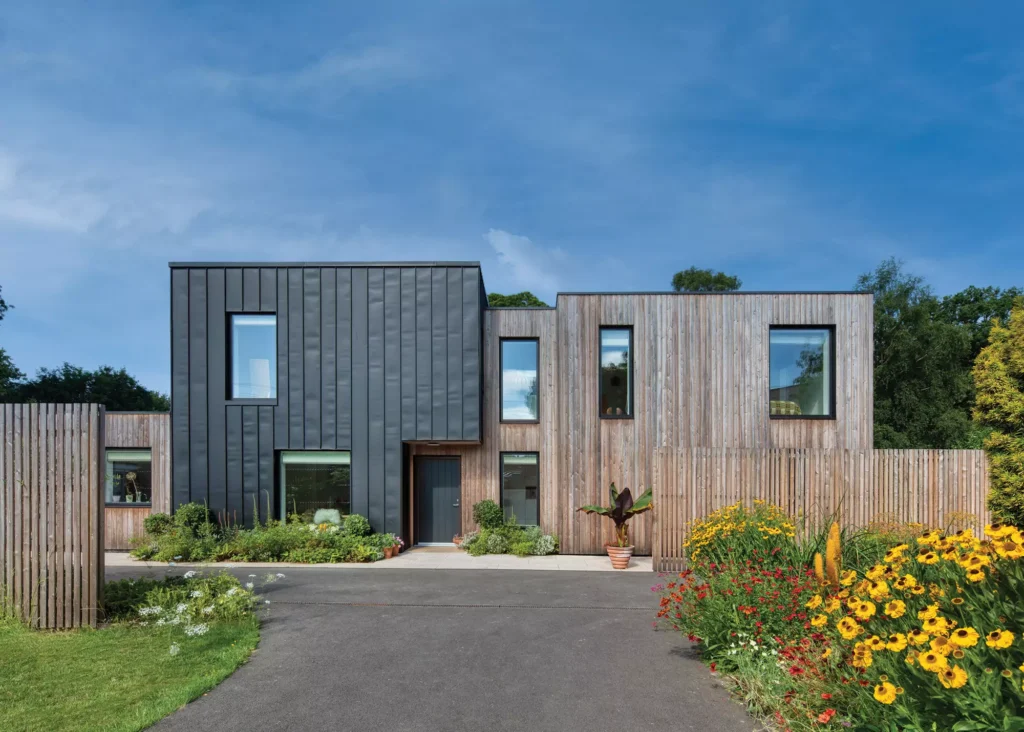
Facit designed this stunning home to replace a tired bungalow in Essex. The owners were attracted to Facit’s design and build offering and the end-to-end process, as well as the fixed prices. Photo: Martin Gardner
At the other end of the scale, Dan-Wood offers over 90 house styles ranging from compact bungalows to two-storey statement dwellings. “There is also a wide range of external and internal design features, and choice of materials, to select from to personalise the home,” says Dan-Wood’s Lucy Yendell.
“These include doors and windows, lighting, fixtures and fittings, flooring, heating and ventilation systems, sanitaryware and interior decor. All the standard designs can be modified, and we can also build bespoke houses, as long as they are compatible with Dan-Wood’s closed insulated panel construction style.”
CASE STUDY Prefab Home by BaufritzThis modern build by Baufritz is located in the vicinity of Richmond Park, London. It is a great example of a bespoke prefabricated home that has been created to suit the location and the owners’ tastes. The houses on the road are a real mix of modern extended properties, Tudor Revival and various forms of Neoclassicism. Baufritz designed the home to merge these distinctly different styles – the nod to Tudor Revival is done by inserting wide blackened timber planks within the typically white rendered facades, as a sign of the timber structure behind. For Neoclassicism, the scheme incorporates classical pilaster designs as part of the wall and/or columns set away from the wall. 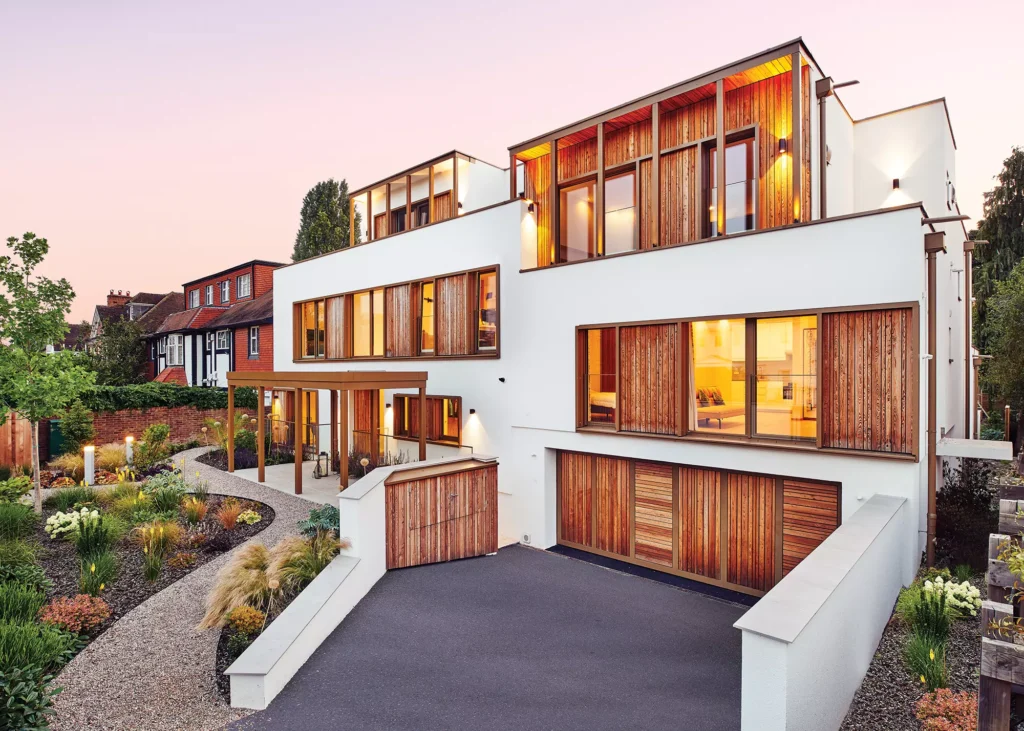 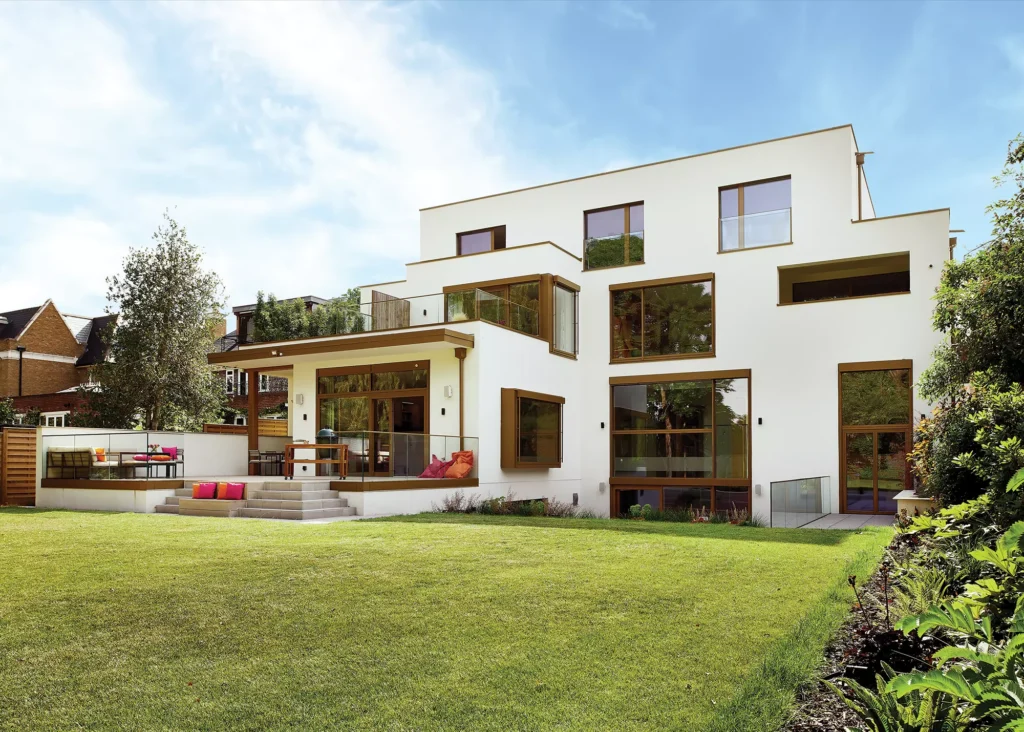 The owner wanted a house that optimised the available space, due to very high London land prices, without compromising on outside areas for relaxation. The architects were able to create in excess of 740m2 of living space over four floors. The property is designed in vertical sections, so each floor is conceived as a terrace or platform. This also means that the house does not have a conventional basement, but a lower ground floor with direct access to the back garden. The owners visited the Baufritz HQ twice to finalise the design of the home prior to the prefabrication process of the timber panel modules. On the first trip they looked in detail at the show houses to get a feeling of the type of decisions they would have make and to fully understand the options available. The second trip was more intense, and the Baufritz team helped the owners to make their decisions easily and smoothly. See more inspiring self builds from Build It’s Project Directory |
In short, when shopping for a prefabricated home, the vast majority of suppliers will help you tailor the scheme to meet your exact needs. They will consider aesthetic choices and how your home will suit your lifestyle. In terms of energy efficiency, it’s straightforward to include measures like high levels of as insulation and triple-glazing from the outset – in fact, there are a number of Passivhaus certified prefab homes in the UK.
In comparison to a more traditional construction and design route, the main difference you should be aware of is the time in the schedule when you have to confirm your architectural and fit-out choices. With a prefabricated home, you must think through and finalise all the details of your design prior to manufacture. Once the fabrication process has begun, changes – while possible – are inefficient in terms of time and budget.
Learn More: 10 Ways to Maximise Your Self Build Budget
CLOSER LOOK How Green Are Prefab Homes?It’s a simple fact: the more work that gets done in the factory, the more accurate the finished house will be. This can help underpin key areas for self builders, such as energy performance. “At Baufritz, we believe the buildings we live, work and sleep in should only use the cleanest materials,” says Robert. “The prefab process means we can guarantee a home with healthy air and high-quality living. This is because we have full control over the supply chain – right down to defining the kinds of paints that should be used throughout the build.”
There are some considerations to bear in mind, though – perhaps most notably the fact that groundworks and foundations have to be absolutely spot on to cater for such a highly-engineered product. |
Undeniably, one of the most attractive elements of a prefab self build route is the sheer speed of development on-site. Most specialists would quote a matter of weeks, with the main shell often being achieved in just a few days. For example, many Baufritz homes can be erected in just four days, and then weathertight in 10 days.
With the amount of planning that goes into a prefab, and the fact so much of the work is done in the factory, running the project schedule should be straightforward. “With our system, the main shell is wind and watertight in a few days. Full house construction on site, interior and exterior, is normally completed in eight to 12 weeks.
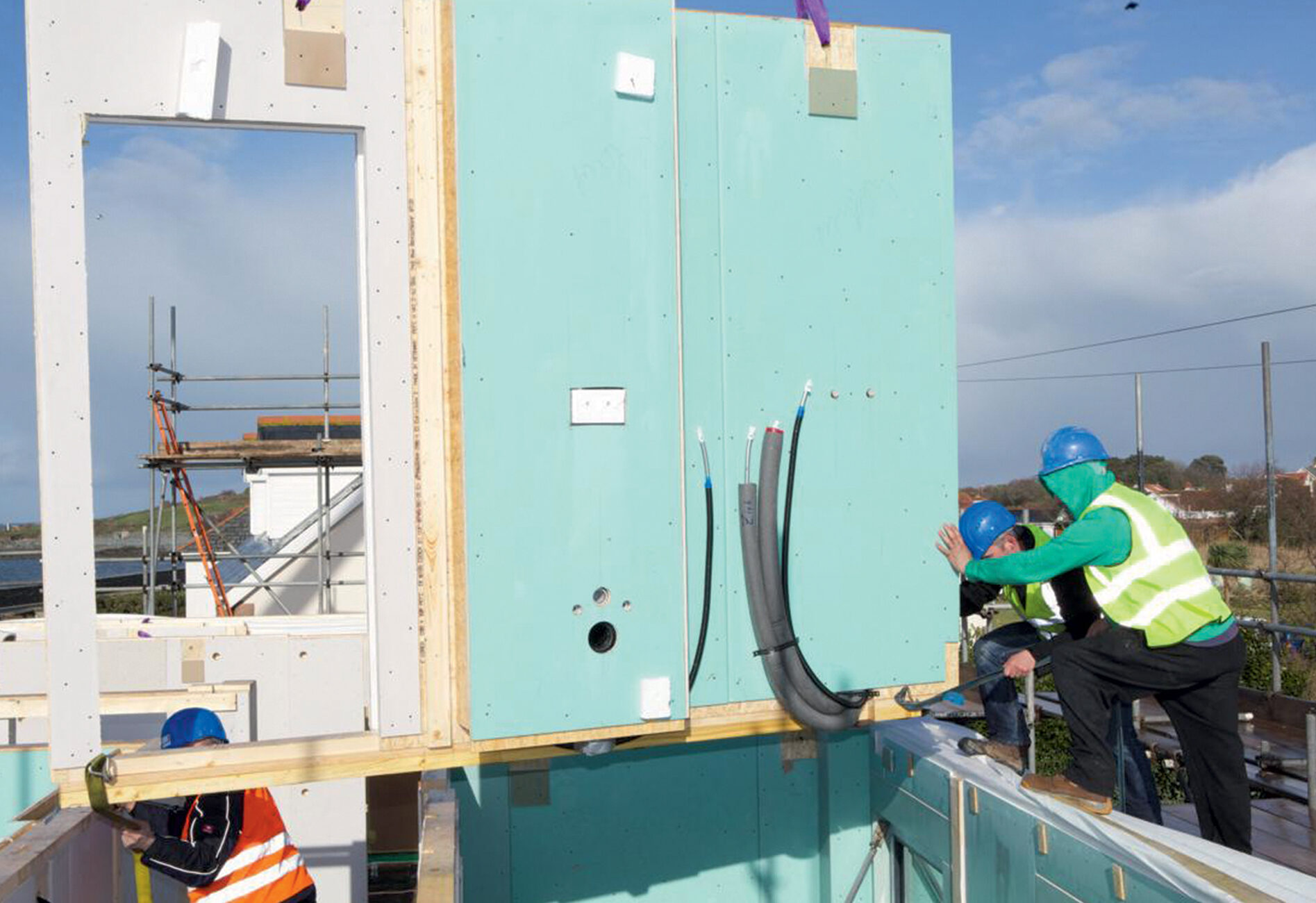
Here the site operatives are installing a Hanse Haus internal wall panel, which has been manufactured with service channels and some plumbing infrastructure in place
But, the pre-build phase can take between five and nine months,” says Dan-Wood’s Lucy Yendell. “There’s a nine-month fixed price period for the preparation which includes, for example, finalising detailed drawings for construction, deciding on fixtures and fittings and managing groundworks.”
Adding to the discussion on timescale and costs, Nick Fulford of N-House says: “With construction costs rising at over 25% per year, a traditional build (normally taking over a year) will see budgets stretched, especially as so many building firms are unable to secure their prices. With modular, a home is completed approximately three months after contract. This means price certainty can be agreed between supplier and buyer.”
Figuring out how much your self build project is likely to cost? Use the Build It Estimating Service to get an accurate breakdown of costs
This article was originally published in January 2020 and has been updated in May 2023, additional content by Anna-Marie DeSouza
